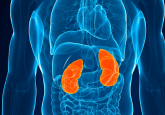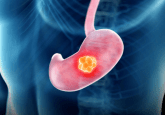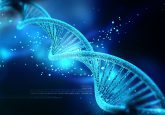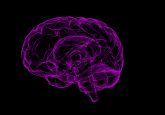Discovery of biomarkers for overactive bladder
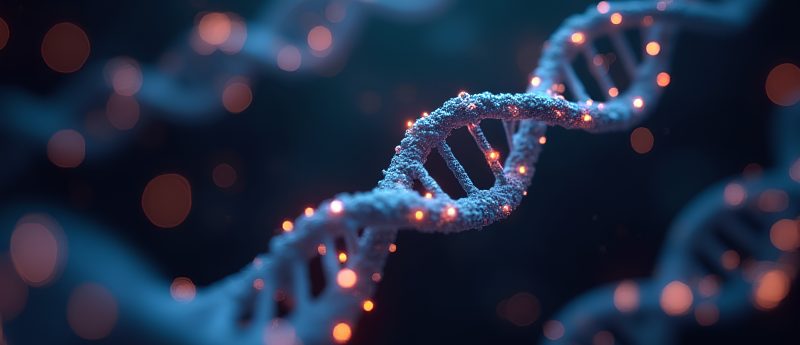
New study reports the discovery of urinary biomarkers with potential for rapid, non-invasive and cost-effective diagnosis of early-stage overactive bladder. We interviewed the leading scientist Dr Young (University of Portsmouth, UK) in order to learn more on the background, specifics and future development opportunities associated with this exciting work.
Can you shortly present yourself?
Dr Young: My name is Dr John S. Young. I am an Associate Professor at the University of Portsmouth, UK. My research centers on lower urinary tract health and disease. Our laboratory focuses on both therapy and diagnosis, particularly of overactive bladder. In terms of elucidating new therapeutic targets, we recently elucidated the role of purinoceptor P2Y6 in overactive bladder. Hoping to advance the diagnosis of overactive bladder, we have recently discovered a combination of chemicals within urine that are specific to early-stage overactive bladder. We also aim to add value to projects outside this area of scientific discipline wherever possible and, in recent years, have contributed biomarker analysis to studies describing the body’s response to stressors (see, for example, here).
In addition to a responsibility for delivering translational research in urology, I have two leadership and management roles; I am Acting Director of the Institute of Biomedical and Biomolecular Sciences and Associate Head for Innovation and Impact.
I did my first degree at the University of York (UK), my PhD at the University of Cambridge (UK) and completed postdoctoral research positions at the Universities of Oxford and Surrey (UK), and Nevada, Reno (USA). I became a Principal Investigator in 2010. Our team works closely with organisations that work to improve the management of lower urinary tract disease, including those in healthcare, pharmaceutical and education sectors.
What are the characteristics of overactive bladder and why it is important to further study this condition?
Dr Young: Overactive bladder is defined by urinary symptoms of increased frequency, nocturia and urgency, with or without urge incontinence; in the absence of proven infection or other obvious pathology (see for more information Drake 2014). The absence of infection or other pathologies are important here because urinary symptoms characterize many different diseases and symptom complexes. Determining the basis of a patient’s urinary symptoms is key to effective treatment.
There are many reasons to study overactive bladder. Its prevalence is thought to be around 1 in 5 adults. Symptoms themselves are highly impactful on patients, their family members / carers and healthcare systems. Surprisingly, we know little about its origins. Current treatments are not cures and are effective in producing only mild symptom relief – and not in all patients. It is therefore appropriate to conclude that further study has the possibility to significantly benefit individuals, carers, healthcare systems and the wider economy.
How challenging was your recent work on biomarkers discovery for overactive bladder?
Dr Young: Our study of urinary biomarkers for overactive bladder had several challenges, with the most notable being associated with our approach to study biomarkers for early-stage overactive bladder and the recruitment of participants with this phenotype. When we designed a study to look for urinary biomarkers of OAB, we chose not to compare two ends of the OAB spectrum because we thought that doing so may only identify biomarkers typical of the bladder remodeling that comes with a very unhealthy bladder. We therefore chose to recruit participants with a range of symptoms that were no more severe than moderate. Given the age-old misunderstanding that urinary symptoms are part of aging and that many people choose not to seek clinical guidance with mild to moderate symptoms, there was considerable challenge in recruiting appropriate participants.
Are you satisfied with the outcome of the conducted research work?
Dr Young: There is some satisfaction gained from using a number of approaches, which were relatively novel for the field. First, as described above, we chose to investigate putative biomarkers in early-stage overactive bladder; when others had previously compared asymptomatic ‘healthy’ controls to overactive bladder patients with advanced symptoms (voiding every hour; waking several times during the night to void; often with urge incontinence). Second, having shown that no single biomarker could distinguish chemicals from the urine of asymptomatic individuals and individuals with mild to moderate symptoms, we chose to look for a combination of urinary biomarkers. Thirdly, we used measures to evaluate diagnostic efficacy – receiver operating characteristic curves – which are very necessary to draw clinically relevant conclusions but often not used in studies of this type.
Despite our approach and rigor, like all studies, there were shortcomings, which ultimately limit the value of the work. Ideally we would have liked to have clinical measures of bladder function (‘urodynamics’) as parameters in the study. Alas, urodynamics is not used for overactive bladder patients with mild to moderate symptoms.
How does the new diagnostic approach developed by you compare to previously existing diagnostic options?
Dr Young: Current methods of diagnosis often mean excluding diseases / symptom complexes that present with symptoms of urinary symptoms of frequency, nocturia and urgency – with or without urge incontinence. In my opinion this is a flawed approach because (1) it’s time and resource consuming, and (2) the methods used are far from perfect. There are those that still believe that urodynamic measures, such as detrusor overactivity, provide positive diagnosis for OAB despite evidence to the contrary – see, for example, Digesu et al. 2003; Hashim & Abrams 2008; Rovner & Goudelocke 2010. With doubt comes delay in treatment; often until a patient has well-developed and significantly impactful symptoms. As we and others have shown that significant remodeling of the bladder occurs with OAB progression, I suspect that current interventions are less efficacious the further OAB develops.
Urinary biomarkers offer the potential for rapid, non-invasive and cost-effective diagnosis. Having identified chemicals associated with early-stage overactive bladder, the point-of-care test that we’re developing aims to be used to diagnose patients before symptoms become impactful. What we’re designing will be suitable for use in primary care (general practitioner surgeries; pharmacies) and nursing / care homes, where current tests are less widely used.
Finally, what we’re developing will be of use as a companion diagnostic to therapeutic intervention; that is, where a patient’s response to treatment can be objectively assessed.
In your view, what are the remaining challenges and potential further developments in the diagnosis of overactive bladder?
Dr Young: At an early stage in our research, we consulted with physicians, other healthcare practitioners and patients to determine what they needed. There was a lot of frustration with current methods and we were told that what was needed was a rapid, simple-to-use diagnosis and that, with many different diseases and symptom complexes producing overlapping symptoms, negative diagnosis of OAB would be as useful as a positive diagnosis. This information demonstrates the significant challenge faced in clinical practice and the potential for future development in the diagnosis of overactive bladder. Urinary biomarkers offer potential but even the most promising research studies require clinical validation; large scale and ideally multi-center.
What are your further work directions?
Dr Young: Having determined that combinations of chemicals in urine are predictive of OAB, we are working towards an in vitro diagnostic device to be used in clinical practice – by physicians and other healthcare practitioners at point-of-care (GP surgeries, pharmacies and nursing / care homes). We are working to develop (1) a device that produces a change in appearance when exposed to the chemicals of our urinary biomarker ‘fingerprint’ – with the degree of change depending on the amounts of each of the chemicals – and (2) then for a smartphone to use its camera to quantify this change in appearance. An app on the smartphone would process this signal and, with the patient’s age and gender, provide positive or negative diagnosis of OAB.
Do you have recommendations for valuable sources for further reading on the subject?
Dr Young: Biomarker discovery in the field urology can benefit a great deal from lessons learned from other clinical disciplines. In designing and conducting this research, the team benefited greatly from a seminal publication by Robotti et al.
There is still a great deal to learn about overactive bladder. A recent review article by Peyronnet et al. provides a good summary of current knowledge.
Thank you very much for talking to us and for the valuable insights.
Interviewer: Atanas G Atanasov, leading scientist interested in molecular medicine and digital health, PI of LBIDHPS, Editor-in-Chief of CRBIOTECH and Executive Director of INPST. Social media contacts: Twitter, LinkedIn, Facebook.
The opinions expressed in this feature are those of the author and do not necessarily reflect the views of Bioanalysis Zone or Future Science Group.

